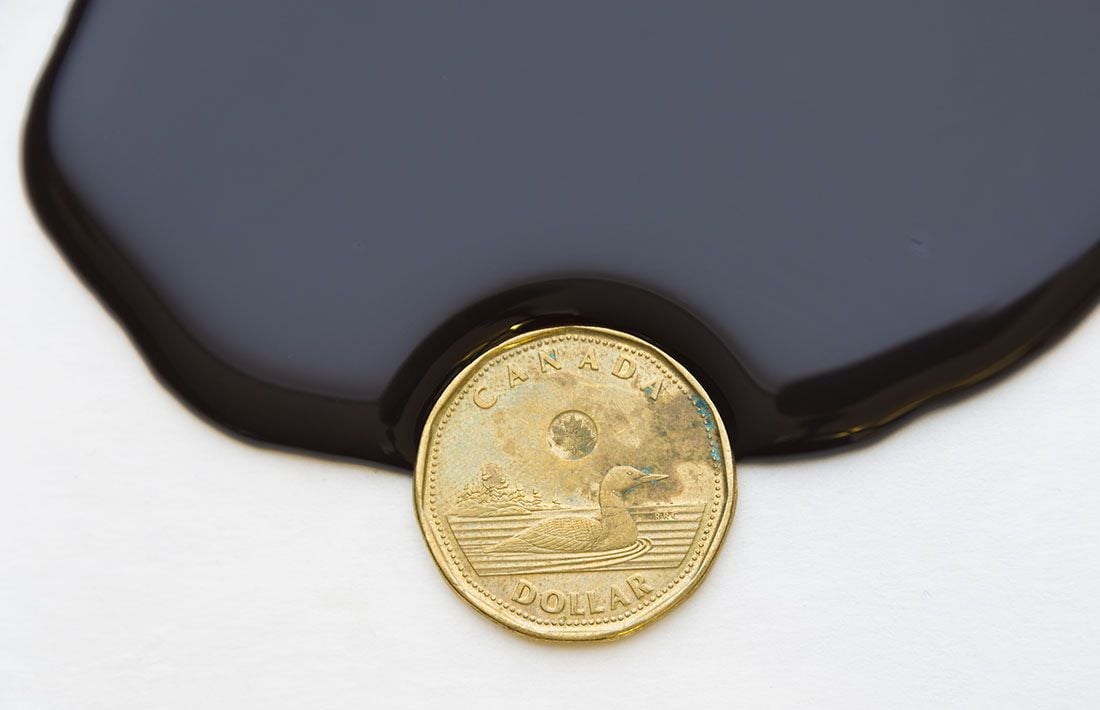Canadian Dollar to Benefit from Further Oil Price Gains
- Written by: Gary Howes
-
- OPEC sticks to output target
- CAD is benefiting from higher oil
- Further outperformance can continue: RBC

Image © Adobe Stock
- GBP/CAD reference rates at publication:
- Spot: 1.7161
- Bank transfer rates (indicative guide): 1.6560-1.6680
- Money transfer specialist rates (indicative): 1.7000-1.7075
- More information on securing specialist rates, here
- Set up an exchange rate alert, here
The Pound was seen hovering near multi-week lows against the Canadian Dollar in the wake of a decision by the world's major oil suppliers to expand production by 400K barrels per day per month until at least April.
The decision meant OPEC forewent the chance to boost oil production by an even greater margin, putting upward prices on the major oil benchmarks.
Rising oil prices were in turn supportive of oil-linked currencies such as the Canadian Dollar which has outperformed most of its peers over the course of the past month.
Foreign exchange analysis from RBC Capital Markets shows the September movement in the Canadian Dollar was well explained by the usual underlying drivers, namely:
Equity market weakness acted as a headwind Rising oil prices acted as support
"We expect that to continue," says Elsa Lignos, Global Head of FX Strategy at RBC Capital Markets.
Above: GBP/CAD daily (top) and USD/CAD daily (bottom).
Secure a retail exchange rate that is between 3-5% stronger than offered by leading banks, learn more.
Prices for the benchmark U.S. oil contract (WTI) rose to their highest level since 2014 at $78/barrel on October 04, while Brent crude went to its highest level since 2018 on October 05 at $81.46.
"The world’s dominant oil cartel did not accelerate its production increases yesterday, propelling oil prices to new multi-year highs and fanning the flames of the raging energy crisis," says Marios Hadjikyriacos, Senior Investment Analyst at XM.com.
Western Canadian Select oil rose to highs at $65.37 as the more-limited-than-expected supply decision from OPEC underpinned robust demand for the Canadian benchmark.
"The current combination of inflation concerns (higher energy prices, supply bottlenecks, higher yields) and downward pressure on risky assets favours currency pairs that show a positive correlation to crude, once we’ve controlled for equity moves," says Lignos.
Oil prices matter for the Canadian Dollar given their contribution to export earnings and higher oil prices therefore help Canada's overall terms of trade.
Canada's merchandise trade balance for August actually increased, surprising economists who thought it would contract, an outcome attributed to a strong performance by the country's energy sector.
StatCan on Tuesday said Canada recorded a C$1.9BN surplus was well ahead of expectations for a print of C$0.4BN, driven by a 0.8% increase in exports and a 1.4% decline in imports.
"Energy export volumes proved strong across crude oil and coal, while higher natural gas prices also helped," says economist Royce Mendes at CIBC Capital Markets.
Above: "CAD: stuck between energy strength & equity weakness" - RBC Capital Markets.
The Canadian Dollar is 2021's best performing major currencies having advanced against all its G10 rivals, with much of that outperformance occurring over the past four weeks, consistent with a spike in energy price concerns.
The Pound-to-Canadian dollar exchange rate is seen pinned towards its recent lows at 1.7151 while the U.S. Dollar-Canadian Dollar exchange rate is at 1.2593, having been as high as 1.29 on September 20.
Concerning the outlook for oil prices, further gains are possible says an industry expert.
"$80+ Brent price might feel toppy, and the move up yesterday might look exaggerated. But prices are only seen uncomfortably high until the first cold spell arrives in the northern hemisphere creating additional demand and triggering a fresh bout of buying," says Tamas Varga, analyst at PVM Oil Associates.
"In the short-term there is still room on the upside, the current backdrop suggests," he adds.
With regards to the Canadian Dollar, Lignos says CAD-crosses are unsurprisingly amongst the most highly-correlated to crude residuals.
Her research finds the only CAD-cross inside the 'crude-neutral' window is CAD/NOK, understandable given Norway's status as an oil and gas producer.
"If we are entering a world where markets worry about higher energy prices and hints of stagflation (though we are a long way off from the 70s), it stands to reason that CAD would be a relative outperformer in G10," says Lignos.











